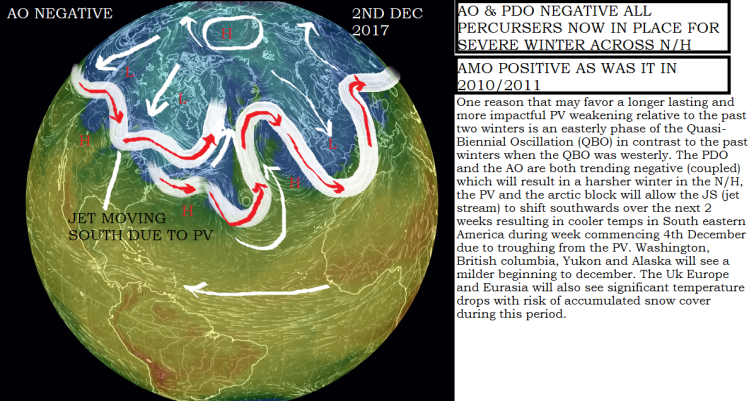Abstract
[1] Monthly mean geopotential height for the past 33 DJF seasons archived in Modern Era Retrospective analysis for Research and Applications reanalysis is decomposed into the large-scale teleconnection patterns to explain their impacts on winter temperature variability over East Asia. Following Arctic Oscillation (AO) that explains the largest variance, East Atlantic/West Russia (EA/WR), West Pacific (WP) and El Niño–Southern Oscillation (ENSO) are identified as the first four leading modes that significantly explain East Asian winter temperature variation. While the northern part of East Asia north of 50°N is prevailed by AO and EA/WR impacts, temperature in the midlatitudes (30°N–50°N), which include Mongolia, northeastern China, Shandong area, Korea, and Japan, is influenced by combined effect of the four leading teleconnections. ENSO impact on average over 33 winters is relatively weaker than the impact of the other three teleconnections. WP impact, which has received less attention than ENSO in earlier studies, characterizes winter temperatures over Korea, Japan, and central to southern China region south of 30°N mainly by advective process from the Pacific. Upper level wave activity fluxes reveal that, for the AO case, the height and circulation anomalies affecting midlatitude East Asian winter temperature is mainly located at higher latitudes north of East Asia. Distribution of the fluxes also explains that the stationary wave train associated with EA/WR propagates southeastward from the western Russia, affecting the East Asian winter temperature. Investigation on the impact of each teleconnection for the selected years reveals that the most dominant teleconnection over East Asia is not the same at all years, indicating a great deal of interannual variability. Comparison in temperature anomaly distributions between observation and temperature anomaly constructed using the combined effect of four leading teleconnections clearly show a reasonable consistency between them, demonstrating that the seasonal winter temperature distributions over East Asia are substantially explained by these four large-scale circulation impacts.
Understanding Teleconnections and Global weather patterns is becoming a key player in understanding anomalies during winter, the following from the Journal of Geophysics Research goes on to explain the “Connections”.


